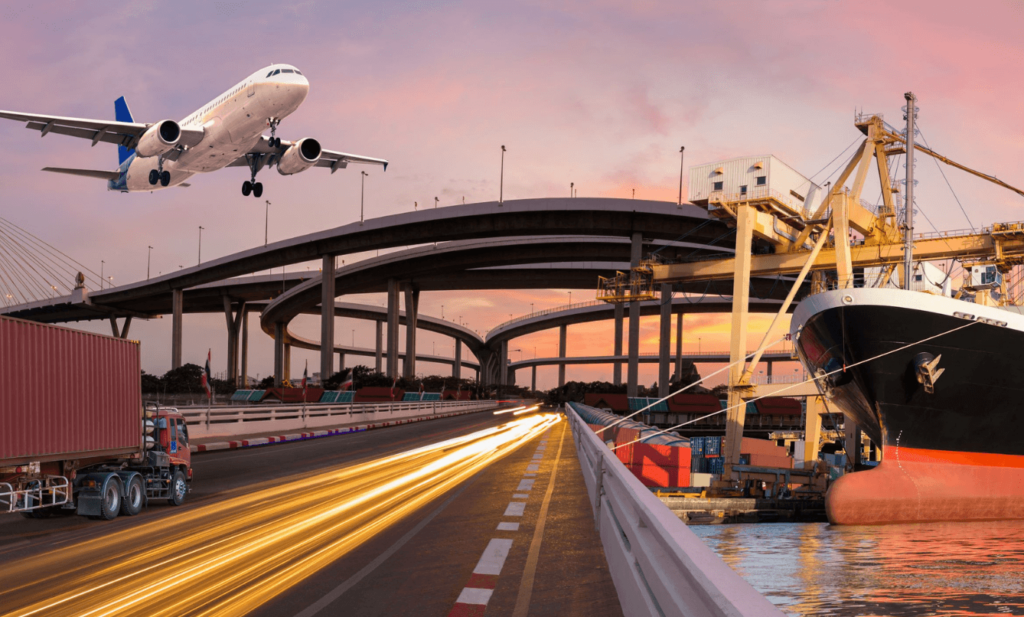The travel and transportation sector offers an excellent example of quantum computing’s potential. It encompasses commercial shipping, air transport and trucking, as well as passenger transportation in all its forms. There is limited logistical connectivity across modes of transportation, and it’s a major carbon emitter. Moreover, travel and transportation are hugely affected by weather, which is difficult to predict accurately despite many modern advances. In turn, unpredictable delivery timelines and arrival outcomes affect manufacturing output and human productivity. In this section of our report, we explore the applications of quantum computing for supply chain and logistics optimization as well as managing carbon emissions in this critical sector.
But first, the weather
The earth’s atmosphere behaves in a chaotic way, with small changes holding the potential for big impacts – the so-called “butterfly effect.” Our current capacity to predict the weather, a major factor influencing transportation and travel, uses approximations of approximations.
There will be a time in the not-so-distant future when meteorologists will gain a greater understanding and ability to model weather patterns, hurricanes, tornados, forest fires, and various extreme weather events. There will be quantum-inspired algorithms using massive amounts of data and variables to get us closer to true accuracy. It’s exciting to consider what that will that mean for the travel and transportation industry. What will it mean for managing the logistics of air travel and related carbon emissions? What will it mean for automotive design and traffic congestion? And what will it mean for productivity when one’s flight is not delayed, or cancelled, or circling the airport in a holding pattern?
Quantum computing: optimization opportunities
Private sector actors are leading the way in advancing quantum computing across industries. For example, Microsoft has developed Azure Quantum, an open ecosystem of quantum partners and technologies. Through Azure, enterprises will be able to create their own paths to scalable quantum computing by using open-source technologies.
In viewing problems of transportation and logistics through a quantum lens, Microsoft sees a profound impact on how goods, services, and people move through cities and around the world. They envision more sustainable cities where motor vehicles, bicycles, scooters, taxis, buses, and pedestrians are routed in the safest, most efficient ways in real time. Such optimized route guidance can minimize time idling in traffic, reduce fuel consumption, improve safety, and boost the ability of city planners to model the impact of major infrastructure projects like public transportation and road construction.
Microsoft also highlights fleet management for routing and scheduling deliveries for drop-off and installations. Currently, ships, trains, planes, and trucks are scheduled independently because calculations to solve for all the variables in the whole commercial transportation ecosystem not possible today. But companies need to prepare for the time when quantum computing does become widely available. An example of this effort is Delta partnering with the IBM Quantum Network to explore application development. This collaboration will allow Delta to explore potential transformational experiences for customers and employees.
Regarding the possibilities to improve ground transportation, Ford is leading the way in terms of investments and patents in navigation and control systems. They discuss the extent to which there can be advances in every field from robotics to aerodynamics. And in the context of building a more future-capable workforce, in the past few years Ford has brought in more than 3,000 employees with advanced computing, analytical and technical skills to help prepare and transform the company for leadership in all-electric SUVs, advanced connectivity technologies and new mobility solutions.
Supply chain optimization is also well suited for quantum. Optimizing resources and inventory levels with dependencies on suppliers from all over the world is crucial for efficient operations, scenario planning, capital allocation, disaster preparedness, and cash flow management.
Cutting CO2 emissions: exponential possibilities
Human activity puts about 36 gigatons of carbon into the atmosphere every year. Transport emissions account for more than 24% of that amount.
With even modest progress in the design and logistics associated with travel and transportation, we can see a dramatic impact on the progress towards a reduction in emissions and the impact of climate change. For example, in the U.S., where 29% of all emissions are from the transportation sector, there are many opportunities to deliver greenhouse gas reductions. Low-carbon fuels, new and improved vehicle technologies, strategies to reduce the number of vehicle-miles traveled, and more efficient vehicle operation are all approaches to reducing greenhouse gases from transportation.
Notably, the International Air Transport Association (IATA) recently announced a resolution to achieve net-zero carbon emissions by 2050. The airlines are seeking to build sustainability into “the ability to explore, learn, trade, build markets, appreciate cultures, and connect with people the world over,” according to Willie Walsh, the IATA’s Director General. In the global shipping industry, several leading names have launched the non-profit Maersk Mc-Kinney Moller Center for Zero Carbon Shipping, committed to driving development of new fuel types and systemic change to drive decarbonization in the sector.
The operational data and scenario analyses allowing for the decarbonization of supply chains can be dramatically enhanced by quantum computing. It will allow for the accelerated implementation of CO2 abatement by supporting sustainable aviation fuels, new aircraft technology, more efficient operations and infrastructure, and the development of new zero-emissions energy sources such as electric and hydrogen power.
The bottom line
The travel and transportation sector may be among those most demonstrably affected by the evolution of quantum computing. Even though we are still a way off from mainstream deployment, the evolution itself is showing promising impact. Challenges involving the level of complexity involved in this arena cannot be solved by the sequential problem-solving of classical computing. To tackle them we need lightning-fast, simultaneous/parallel processing of data. We need signals rather than noise. We need quantum computing.
This article is one section of the report, “Quantum Impact — The Potential for Quantum Computing to Transform Everything.” Click here to learn more and access the full report.
Please see the PDF version of the full report for important disclosures.
Resources:
https://news.delta.com/delta-partners-ibm-explore-quantum-computing-airline-industry-first
https://www.quantumcomputinginc.com/blog/quantum-computing-transportation/




















